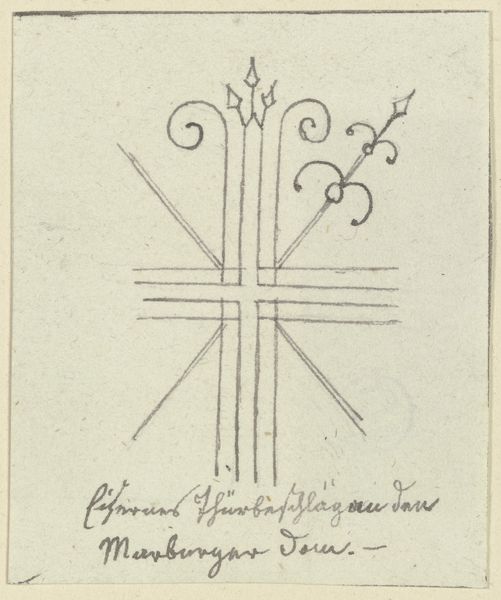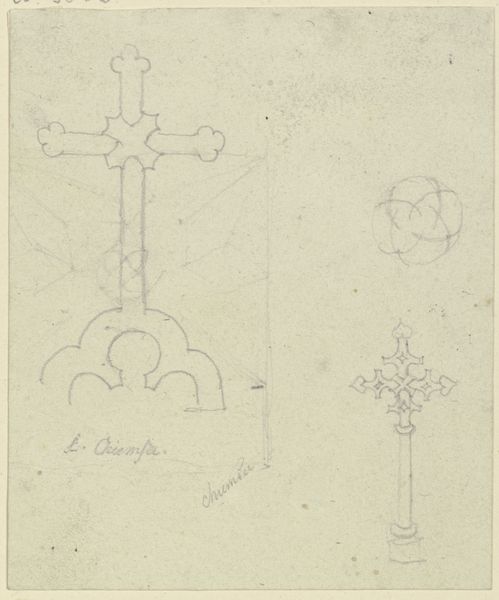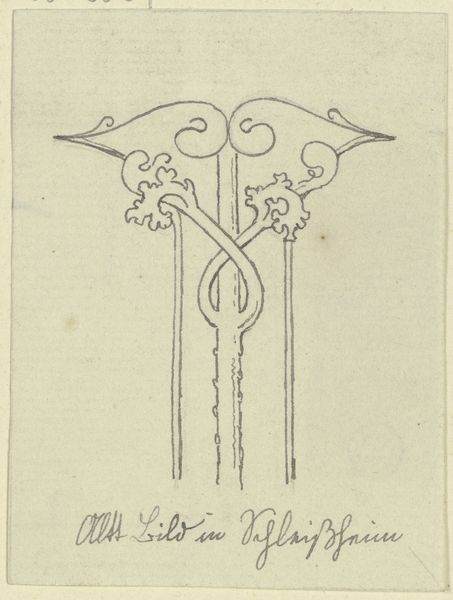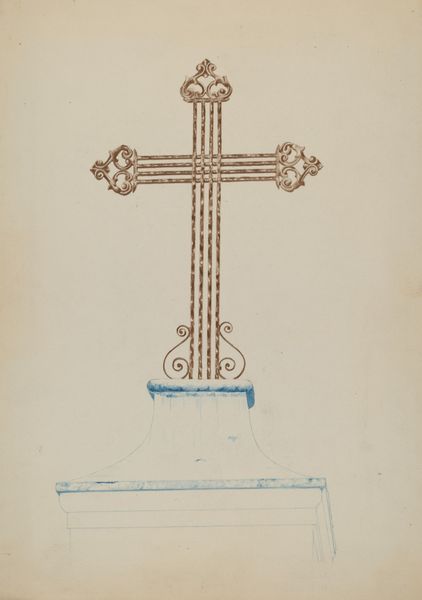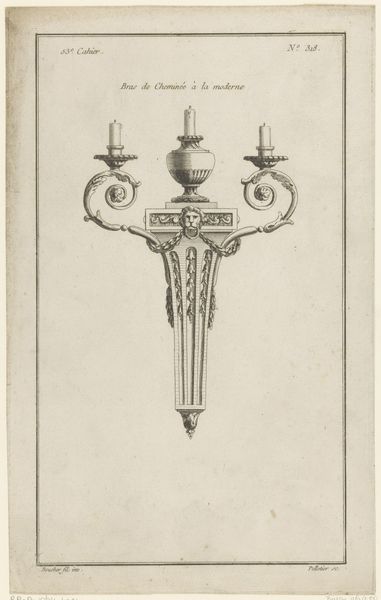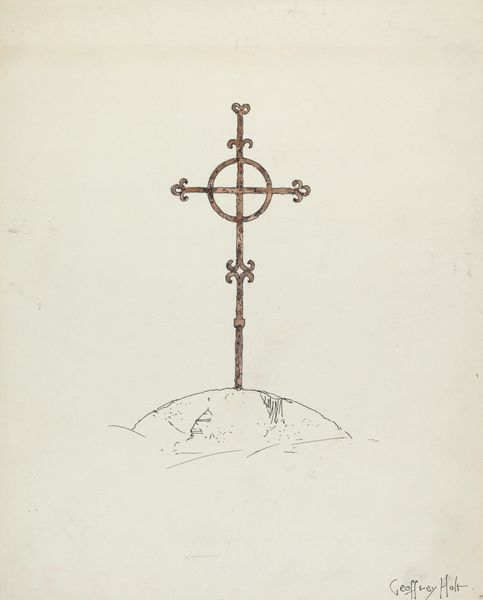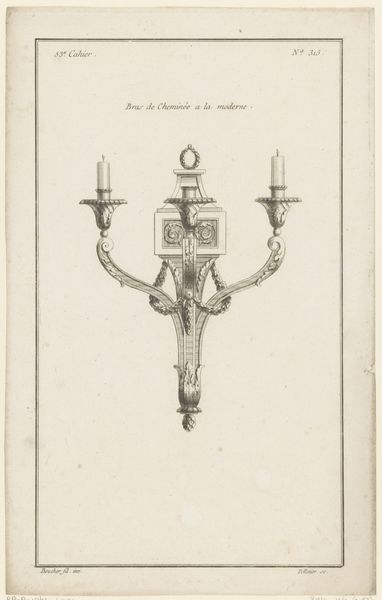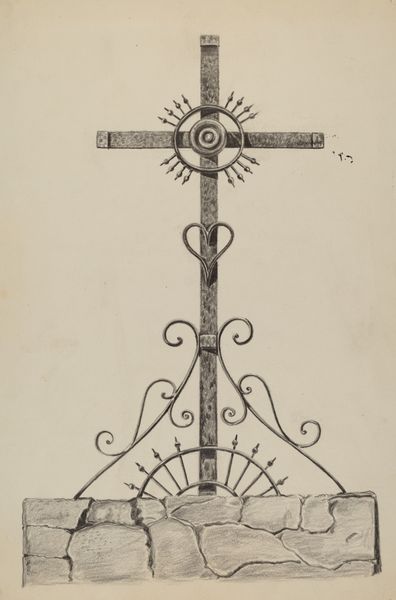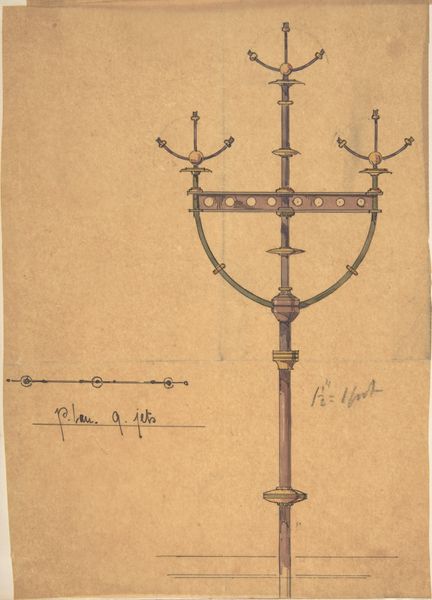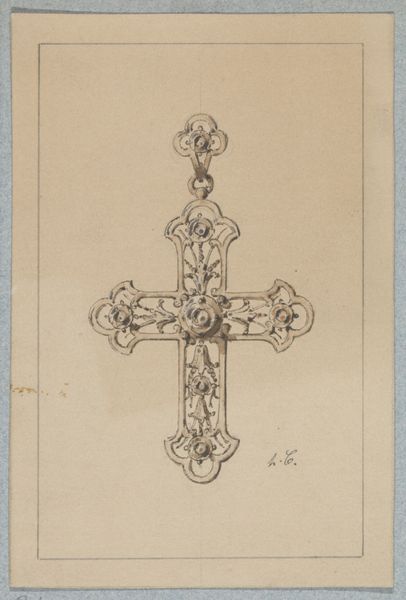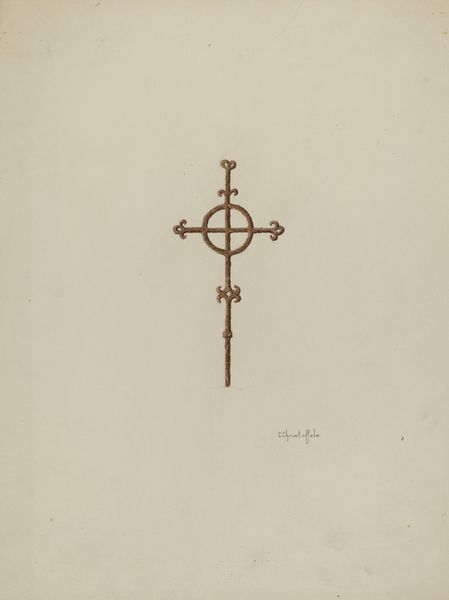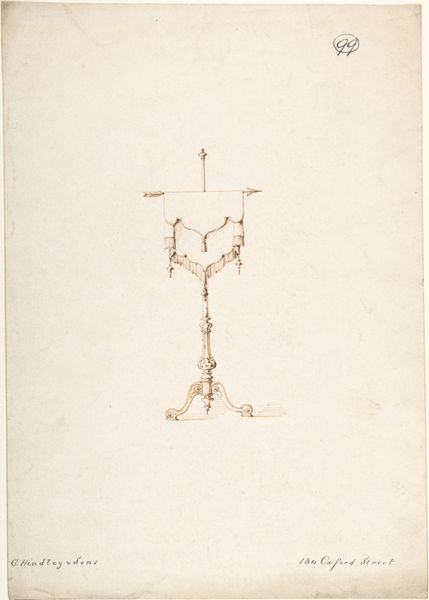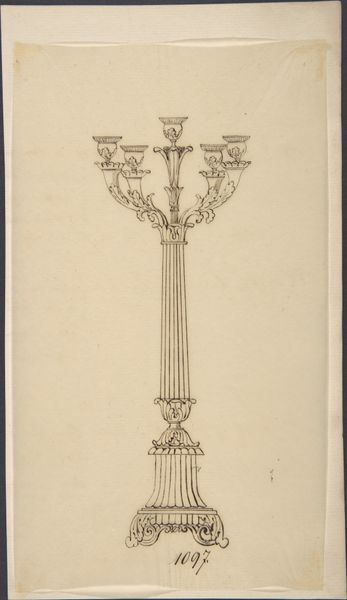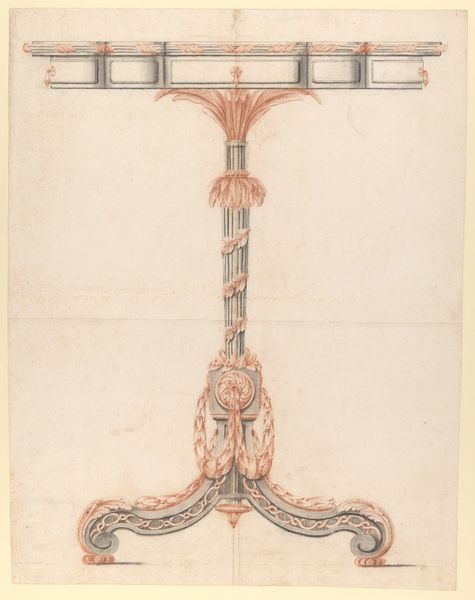
drawing, paper, ink, architecture
#
drawing
#
medieval
#
paper
#
ink
#
architecture
#
calligraphy
Copyright: Public Domain
Curator: This small yet captivating drawing in ink on paper is titled "Turmkreuz der Frauenkirche in Nürnberg." Attributed to Karl Ballenberger, it captures a tower cross from the Frauenkirche, or Church of Our Lady, in Nuremberg. Editor: It's striking! Stark in its simplicity. The cross, rendered in such a direct, almost skeletal fashion, gives me a feeling of resilience, as if witnessing a survivor. Curator: Indeed. Frauenkirche carries a significant historical weight. Built in the 14th century on the former site of a synagogue, it served as the Imperial Chapel. Consider how Ballenberger chose to depict only the cross, almost detached. Editor: That erasure, the very conscious decontextualization, is powerful. By focusing solely on the cross, elevated and isolated with the addition of a cock, it feels like a potent symbol ripped from the complicated tapestry of religious and political history that Frauenkirche embodies. The synagogue's violent history, layered with its Christian appropriation, isn’t directly represented. Curator: The sketch’s style evokes the tradition of medieval manuscripts and architectural drawings. Its lines emphasize the enduring power and visual vocabulary of the cross as a symbol within Nuremberg. The artist is showcasing, and to a degree honoring, a historic religious emblem. Editor: But who is it for? Even simple line drawings reproduce power. What do you think the artistic choice to show architectural fragments tells about the larger narratives this piece engages with? Does it reinforce the Church’s cultural power, or subtly critique it by isolating a symbol often implicated in complex, violent legacies? Curator: The choice may simply reflect Ballenberger’s artistic focus on architectural details within the city's landscape. Consider the drawing in the broader context of architectural studies; perhaps it's part of a collection intended to document or preserve aspects of local history. Editor: And even that act of documentation becomes an assertion of what is considered valuable or worthy of preservation. Looking at "Turmkreuz," it challenges us to critically examine not just the physical artwork itself, but also the historical forces and power structures it represents, sometimes silently. I leave here appreciating how something seemingly simple can become such a conduit for reflecting on historical weight.
Comments
No comments
Be the first to comment and join the conversation on the ultimate creative platform.
